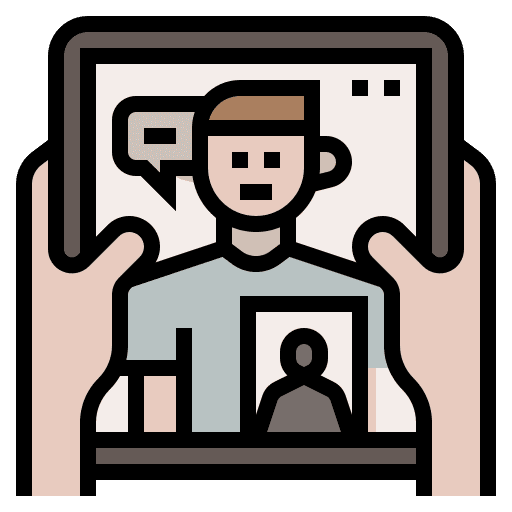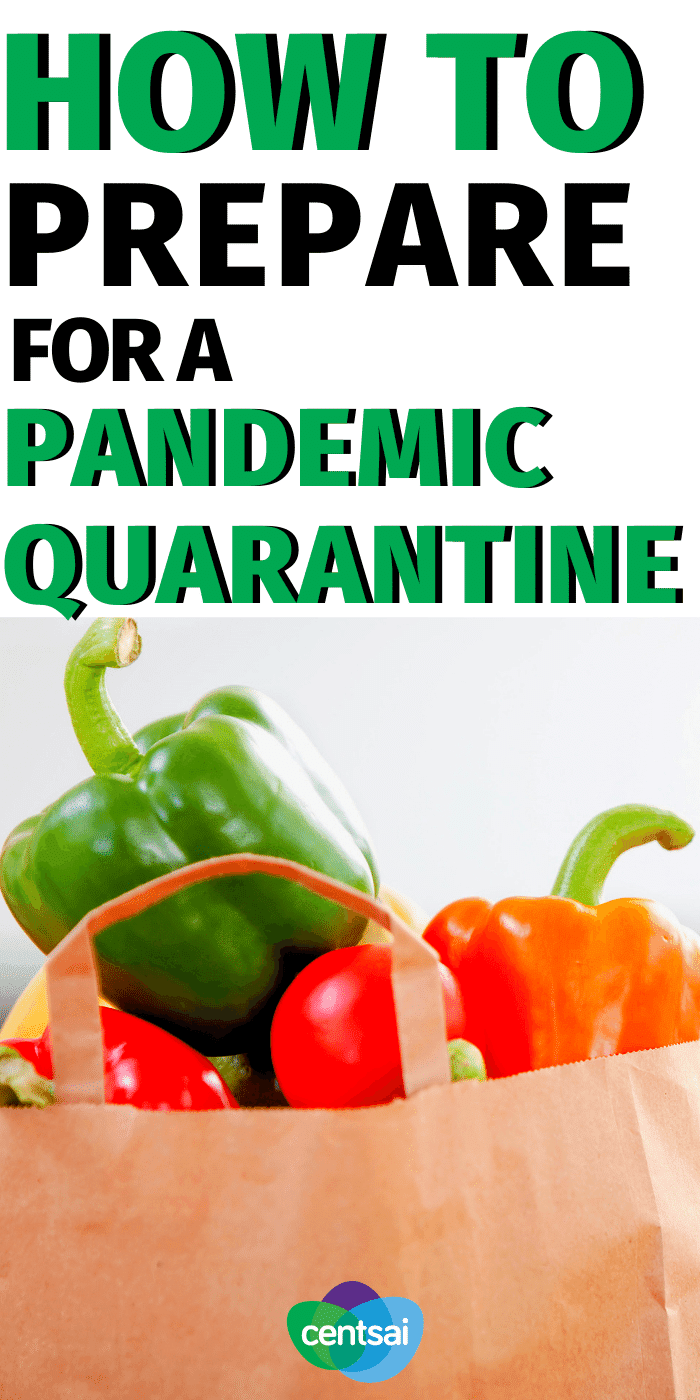
Crazy how toilet paper and hand sanitizer have beaten dollars and cents as the United States’ official currency, isn’t it?
Okay, maybe it’s not that bad (yet), but with the recent outbreak of the novel coronavirus and COVID-19, our social media feeds are littered with images of scarcity. We see empty supermarket shelves, with lines stretching for blocks just to enter the store.

Ironically, the source of this is not a halt in supply distribution. The perception is that 81 percent of food and supply shortages are due to stockpiling, Statista reports.
This is a global pandemic — something the majority of us have not dealt with before — so it’s no surprise many are panicking.
“In situations of uncertainty, people feel the need to do something to keep themselves and their family safe,” says Yasmine Khater, an executive coach certified in neuroscience.
“People try to feel safe by hoarding or stockpiling to eliminate one easy task, rather than tackling the biggest investments and best lifestyle changes, which can be something as mundane as washing your hands.” Khater continues. “This zero-risk bias is completely irrational logic that our brain likes to use to eliminate one risk over the rest — toilet paper is an ideal example of that.”
While half of the population are stockpiling just two weeks worth of groceries, a Statista report shows, any change in regular shopping habits will affect supply and demand, leading to the emptiness we see in supermarkets nationwide. This further reinforces the uncertainty: “If everyone else is stocking up, should I do it, too? How long should I plan for? What should I buy?”
How to Prepare for a Quarantine During a Pandemic
Currently in the U.S., 270 million people in at least 33 states have been told by their governments to stay at home in response to the coronavirus outbreak, and that number is a moving target. That’s about eight in 10 people facing the same questions and concerns you may have. (High School Musical’s “We’re All in This Together” plays in the background.)
While there is no one-size-fits-all answer, there are steps you can take to ensure you and your family are financially prepared.
Having an easily accessible emergency fund is vital. “Put away as much cash as possible in the event of an emergency or if you’re out of work,” says financial coach Tarra Jackson, a.k.a. Madam Money. “That stashed cash can be a lifesaver in the event of a temporary loss of income.”
Make a list of essential and non-essential expenses. “Spend the least amount of money as possible on non-essentials like takeout or forgotten subscriptions,” Jackson advises. Cook at home instead of ordering pizza; in lieu of cable, consider Netflix or Hulu. Since you are all staying home together, see if you can share one subscription instead of several, if you normally use separate accounts.
By drafting a list of expenses and being mindful of your outgoing cash flow, you’ll discover where you can cut corners while it is necessary. The pandemic will not last forever, and the small financial changes you make now could save you in the long run.
Of course, preparing to stay in your home for weeks on end is not an attractive prospect for anyone.
But if you are properly prepared, it might not be as bad as it may seem.
“The most important — and often overlooked — step in preparing for a quarantine, pandemic, or any major issue is a positive mindset,” says George McCarron, a former law enforcement trainer certified in pandemic preparedness and response.
“Remember that you, your family, and society will get through this event no matter what temporary changes or disruptions may occur. Reassure your loved ones and reach out to your social network, a little moral support goes a long way.”
A Quarantine Plan
Sharing his own family’s plan, McCarron advises:

- Contact friends and extended family and let them know you will not be visiting to help keep them (and you) healthy. Set up calls or FaceTime sessions to stay connected.

- Refill prescription medicines, and pick up spare eyeglasses and hygiene products (if you can afford to do so).

- Do not greet deliveries at the door; open packages outside the home; dispose of the packaging, sanitize hands and items before bringing them inside; wash hands afterward.

- Everyone in the household should make a list of foods and treats they would like if available (and if you can afford them).
 Make time each day to walk or exercise outside while maintaining social distancing.
Make time each day to walk or exercise outside while maintaining social distancing.

- Make time for everyone in the household to be together to prevent feelings of isolation (play a game, watch a show, or simply read in the same room).
Keep your plan simple, and be ready for it to evolve and change constantly.
There is new information available each day, and staying up-to-date on what this means for you, your family, and your finances, can help put your mind at ease while not overwhelming you.
Use screen-time trackers that are available on your iOS or Android phone to monitor how much you’re consuming. Turn off push notifications so you’re not tempted to check your social feed. Don’t read the news before you go to bed. Social media should be a stress-reliever, not a stressor. If you find yourself getting overwhelmed, it’s time to turn it off.
It’s also wise to have a plan in place in the event that someone in your household gets sick. Look up the route to the closest hospital in the event of an emergency and decide how you are going to get there. If it’s not severe enough for an ambulance, or if driving is quicker if you have a car, make a decision in the back of your mind and stick to it.
If your government is advising you to stay indoors, it is not only in your best interest, but in the best interest of everyone in your area.
What Should You Buy to Prepare for a Pandemic or Quarantine?
In terms of food, there are some obvious staples when it comes to stockpiling. (Though your personal taste and budget come into play). Surprisingly, packaged food and alcohol beat frozen food and tobacco on the sales increase chart since the COVID-19 outbreak, Statista reports. (Yes, very surprising alcohol is up there; the 21 empty wine bottles in my apartment are shocked.)
Buying Groceries
Aside from assuredly essential (in my opinion) alcohol, keep this list in mind the next time you do your grocery shopping:
- Nonperishable food like ramen noodles, dried soups, dried meats, nuts
- Rice in bulk
- Pasta
- Canned foods like black beans, chickpeas, corn
- Seasonings (to add flavor to the blandest stockpiled food)
- Peanut butter or other nut or seed butters
- Steel-cut oats and cereals
- Some snacks like microwave popcorn, potato chips
- Bread (and then freeze it)
- Frozen veggies and fruits
- Bottled water in the event of a disruption in services
Don’t forget you can still buy meat, fresh vegetables, and fruit. This list is just what will last you.
You should still plan only for a two week supply at a time.
You can also calculate how much food you really need for your household with this tool built by Reuters.
Other Items to Buy
Outside of food, there are other things you should consider buying or having on-hand when preparing for a pandemic or quarantine situation:
- Some cash in small bills in the event you can’t use a credit card
- Any essential prescription medicines, as well as acetaminophen and a bottle of cold or flu medicine, just in case
- Hygiene products like soaps, shampoos, deodorant, hand sanitizer
- Disposable gloves
- Tools like can openers, scissors, general cooking utensils
- Device chargers
- Comfort/entertainment items like books, games, spare batteries, and lightbulbs
- A backpack/small suitcase in case you need to leave home quickly in the event of an emergency
“As you take care of your needs, remember others,” McCarron adds. “You don’t need to stock a bunker — we are all in this together. Prepare, but don’t freak out. Leave supplies for others to buy, too. Don’t forget, you are still able to go to the grocery store to pick up additional items as needed. The idea is to limit the number of trips needed — not to eliminate them.”
Final Thoughts on How to Prepare for a Pandemic
The main thing, as we have seen, is not to panic. Panicking and preparation do not go hand in hand. Before you go to the grocery store, or buy something online, ask yourself if this is something you would have bought before, if it’s something you will definitely use, and why you’re really buying it.
Identifying if it’s “need-to-buy” versus a panic/boredom-induced urge to buy. “We need to challenge these panic-induced thoughts. Start to take stock of what you have at home already and how long will that last for before buying more,” Khater adds.
It’s coronavirus now, but there’s no guarantee this will be the last pandemic we face in our lifetime. Being prepared will help you tackle it head on, whatever it throws at you.








![[VIDEO] COVID-19 and Your Retirement Mindset](https://centsai.com/wp-content/uploads/2020/04/COVID-19-and-Your-Retirement-Mindset-e1585842640271-461x372.jpg)


